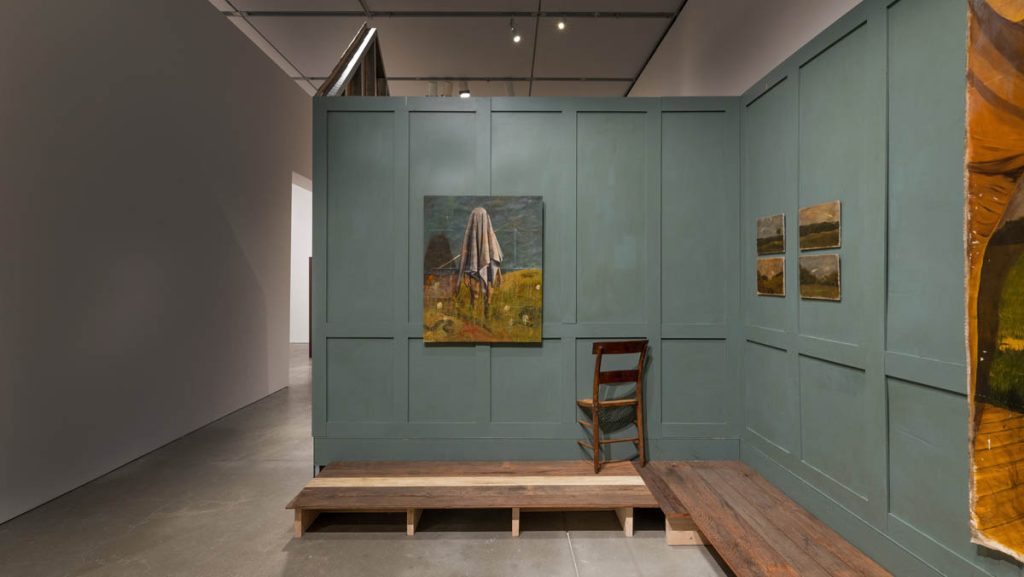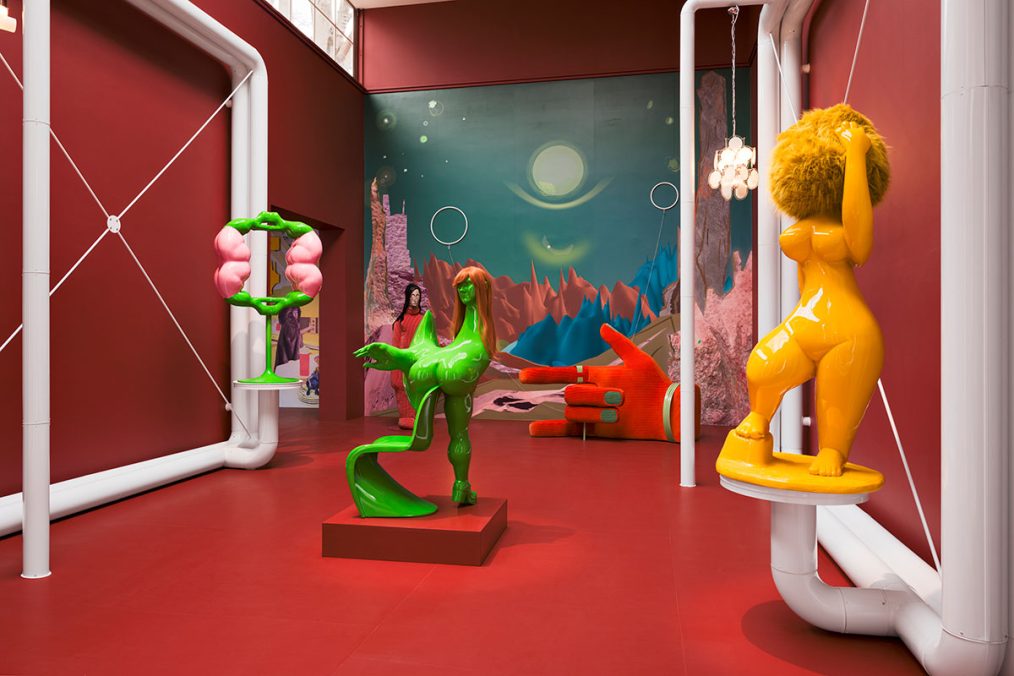
In narratives and in reality, humans and machines often merge in surprisingly new, sometimes critical ways. In this way, they drive discourse. With their exhibition Invitation of the Soft Machine and Her Angry Body Parts Jakob Lena Knebl and Ashley Hans Scheirl playfully and humorously make various facets of contemporary body discourses resonate. Knebl and Scheirl transform the Austrian Pavilion in the Giardini into an open stage that invites the audience to explore the ‘spaces of desire’ staged by the Viennese artists. In this temporary staging, the two unfold their artistic universe with paintings, sculptures and photographs, through textile works, writing and video, to a fashion collection and a magazine. The Soft Machine materialises in the form of a literal ‘exhibition being’ whose individual parts merge into an organic, living whole. The pavilion is transformed into an inviting, ‘heterotopian’ space where art, performance, design, fashion and architecture come together in exciting, ironically humorous, futuristic hybrid forms.
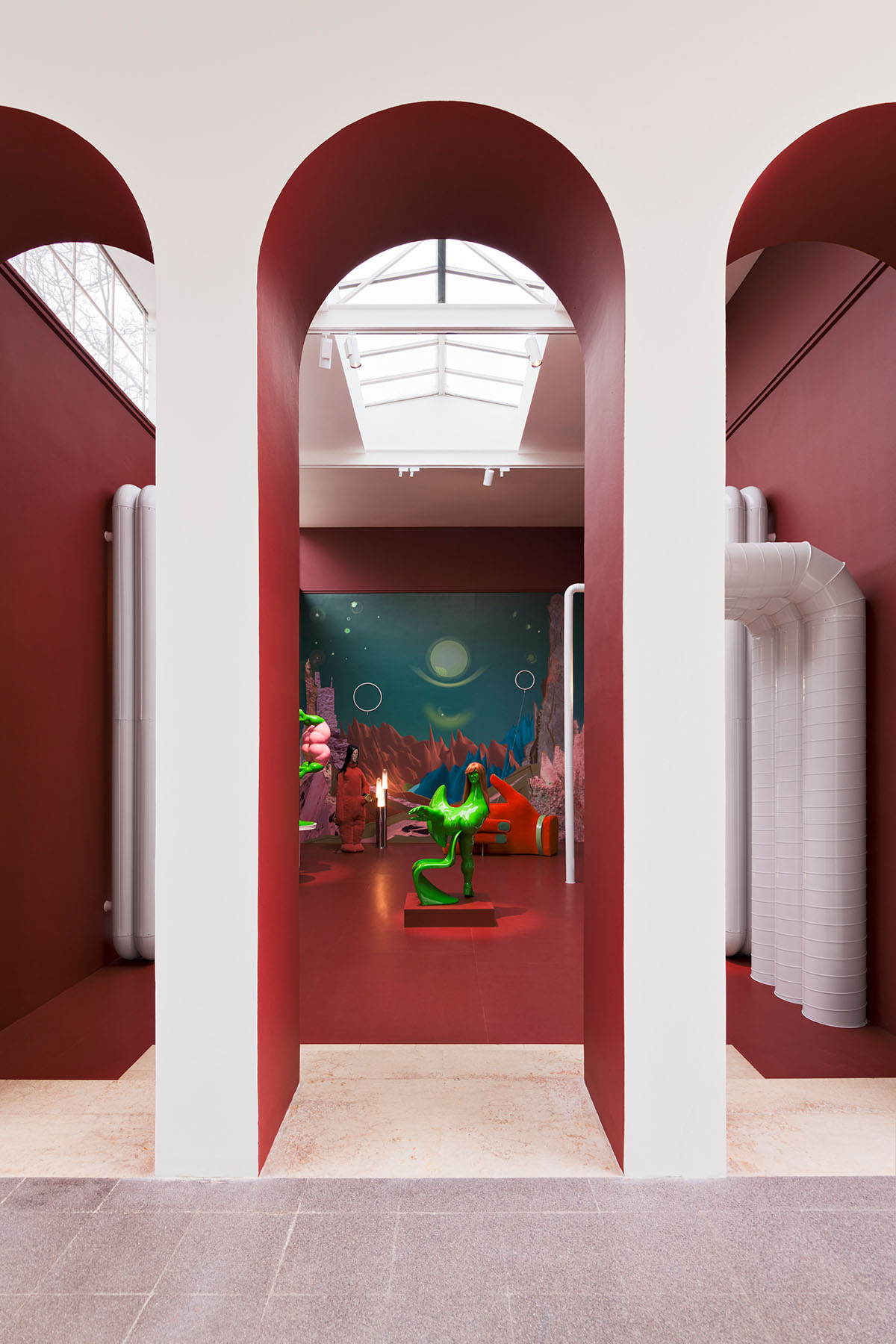
INSTALLATION VIEW, AUSTRIAN PAVILION, BIENNALE ARTE 2022 Photo: Georg Petermichl © Jakob Lena Knebl and Ashley Hans Scheirl 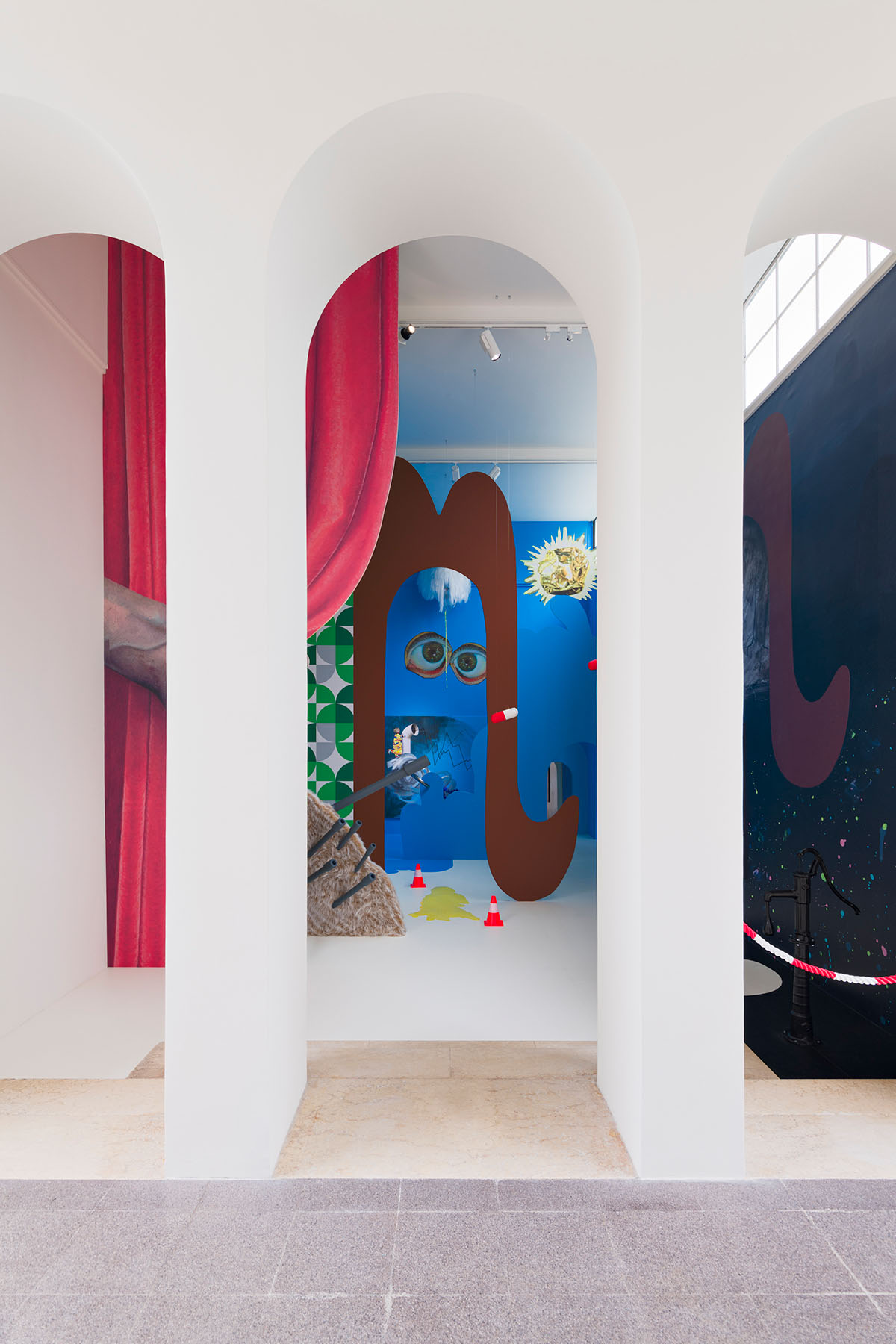
INSTALLATION VIEW, AUSTRIAN PAVILION, BIENNALE ARTE 2022 Photo: Georg Petermichl © Jakob Lena Knebl and Ashley Hans Scheirl 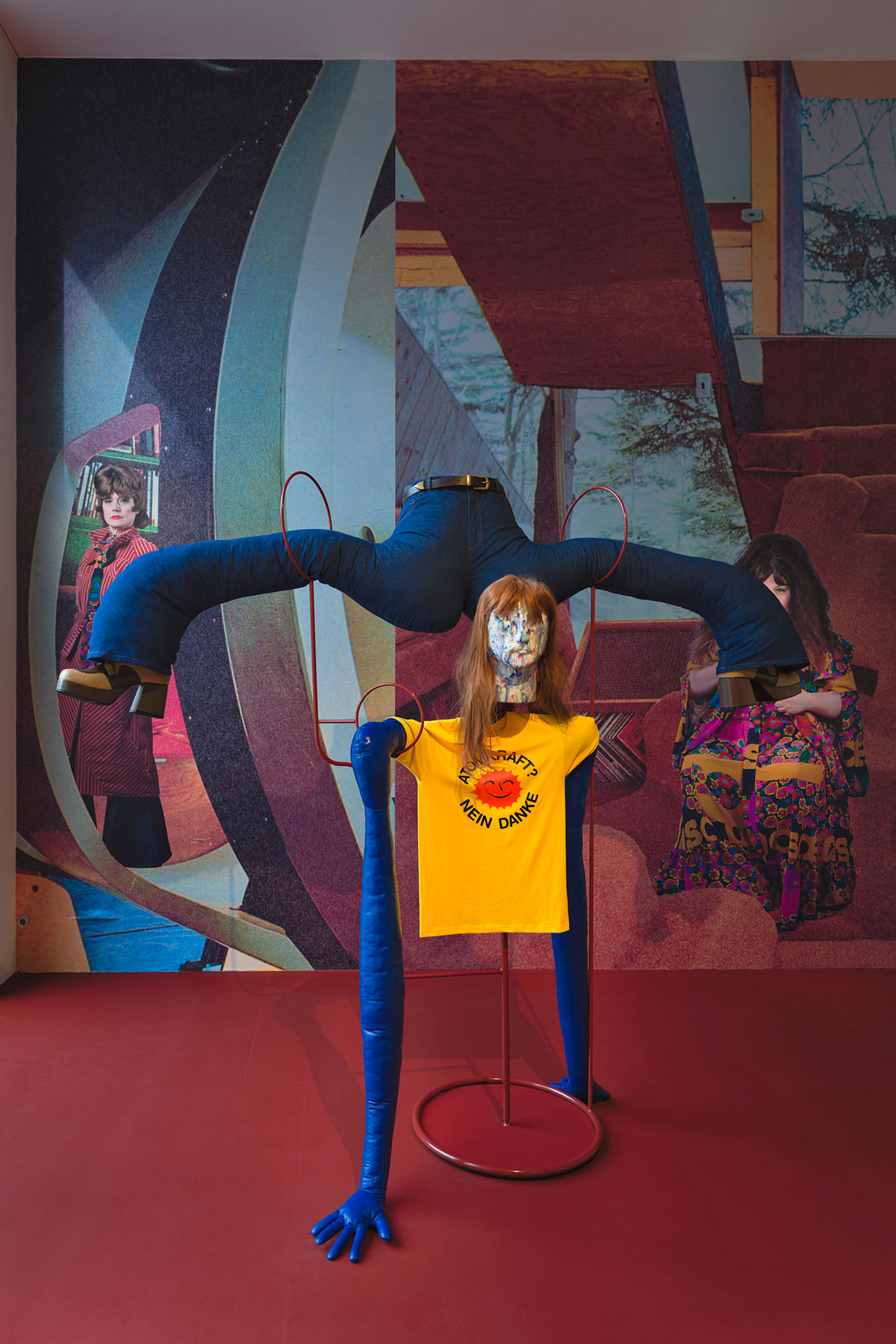
INSTALLATION VIEW, AUSTRIAN PAVILION, BIENNALE ARTE 2022 Photo: Georg Petermichl © Jakob Lena Knebl and Ashley Hans Scheirl 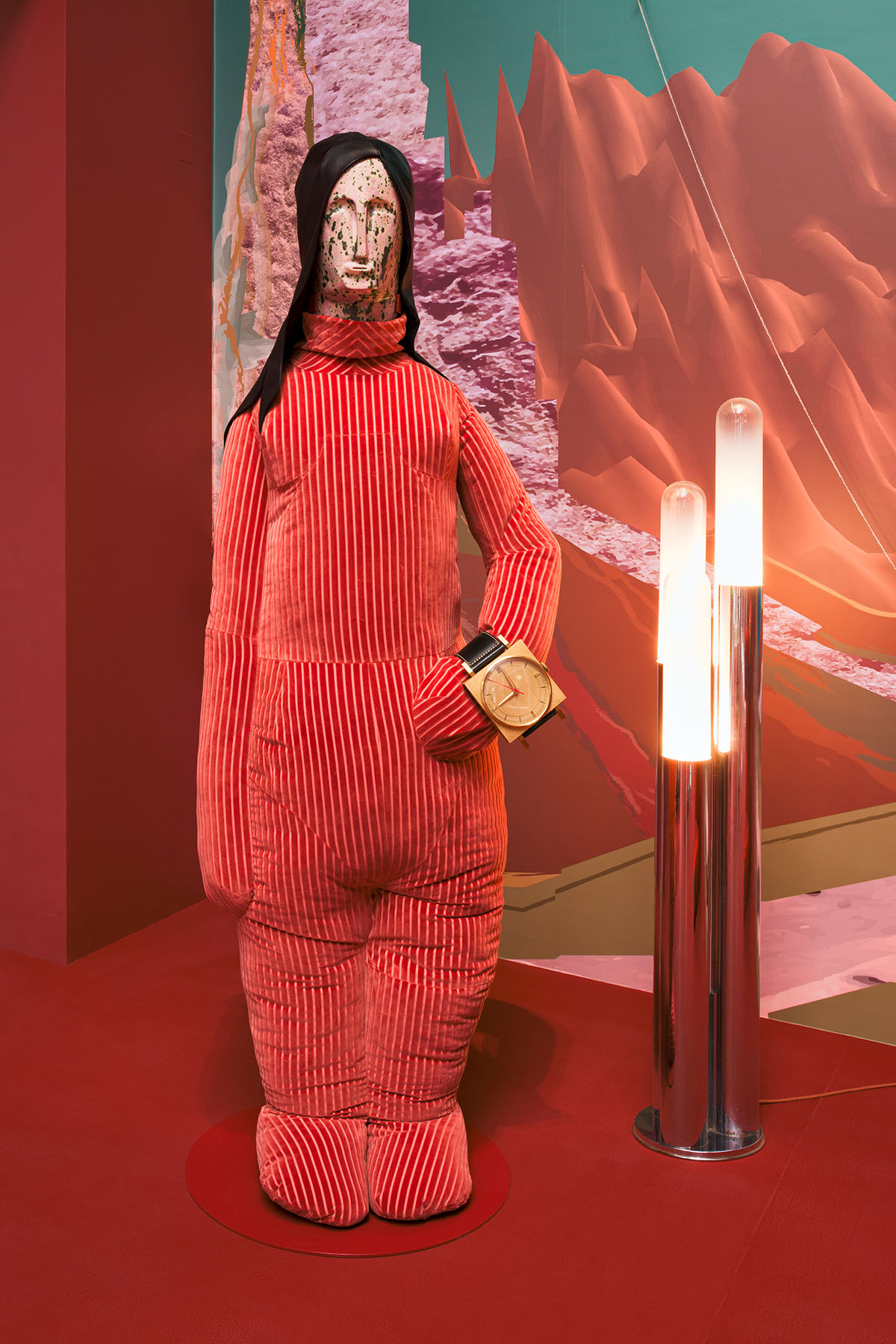
INSTALLATION VIEW, AUSTRIAN PAVILION, BIENNALE ARTE 2022 Photo: Georg Petermichl © Jakob Lena Knebl and Ashley Hans Scheirl
Jakob Lena Knebl and Ashley Hans Scheirl focus on the structural conditions of the Austrian Pavilion’s symmetrical architecture, which is both divided and connected by a colonnade. Each of the two main spaces bears the mark of one of the two artists. While the two individual positions remain distinct, they are also in conversation with each other. Thus the various materials, modes of operation, symbols, and forms appear to oscillate between the two presentations and are duplicated and mirrored. The side pavilions earmark the artist duo by way of a reflecting lllusionist spatial situation.
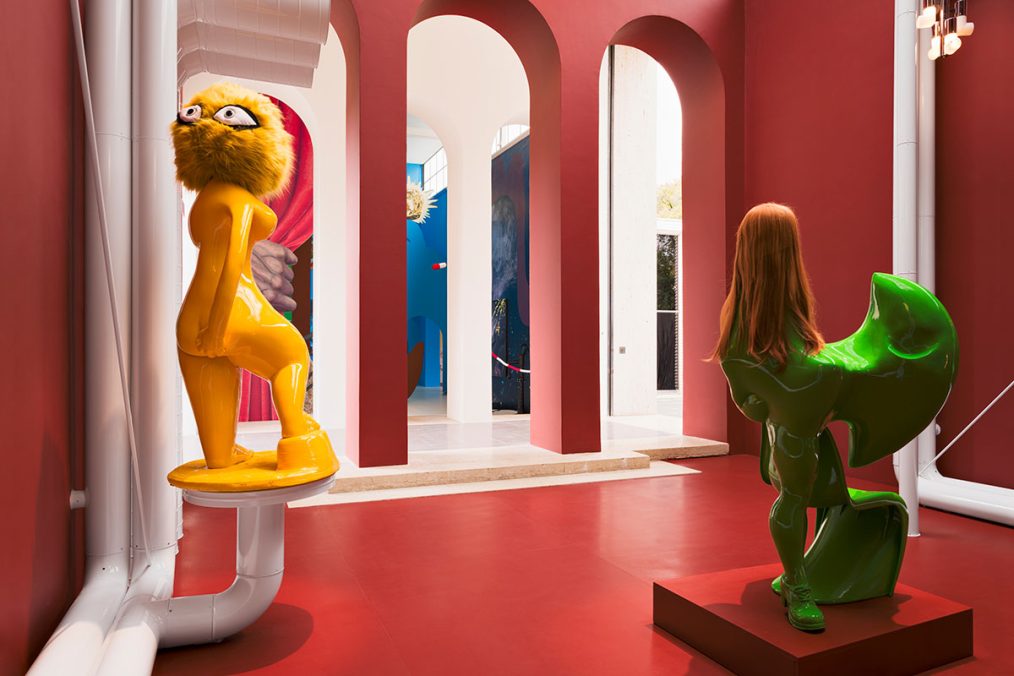
INSTALLATION VIEW, AUSTRIAN PAVILION, BIENNALE ARTE 2022 Photo: Georg Petermichl © Jakob Lena Knebl and Ashley Hans Scheirl 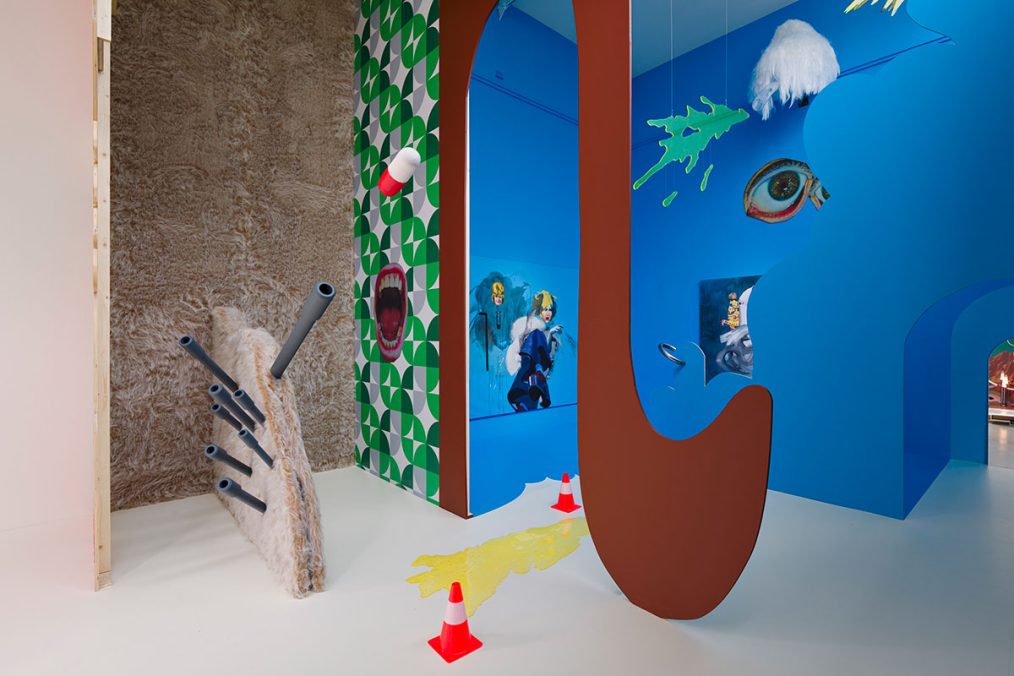
INSTALLATION VIEW, AUSTRIAN PAVILION, BIENNALE ARTE 2022 Photo: Georg Petermichl © Jakob Lena Knebl and Ashley Hans Scheirl
Jakob Lena Knebl’s expansive installation elude clear-cut classifications. It displays the artist’s current interrogation of the 1970s, especially the sociopolitical issues and the history of art and design of that decade, and reflects their potent influence on the present day. Key aspects in this context include identity and the possibilities of its transformation, the places of its staging, and the question of co-producers and mechanisms of exclusion. The scenography of Knebl’s work in the pavilion is dominated by opulence. A sci-fi landscape extending the length of the pavilion’s rear wall sets a surreal scene that appears at once utopian and dystopian. It is framed by a steel structure inspired by the architecture of the Centre Pompidou. Life-sized hybrid sculptures of ceramic, leather, fibreglass, extiles, and steel that challenge the arbitrary dividing line between art and design share the exhibition space with visitors. Classical craftsmanship is combined and interwoven with polyurethane casts based upon digital, 3D printed models.
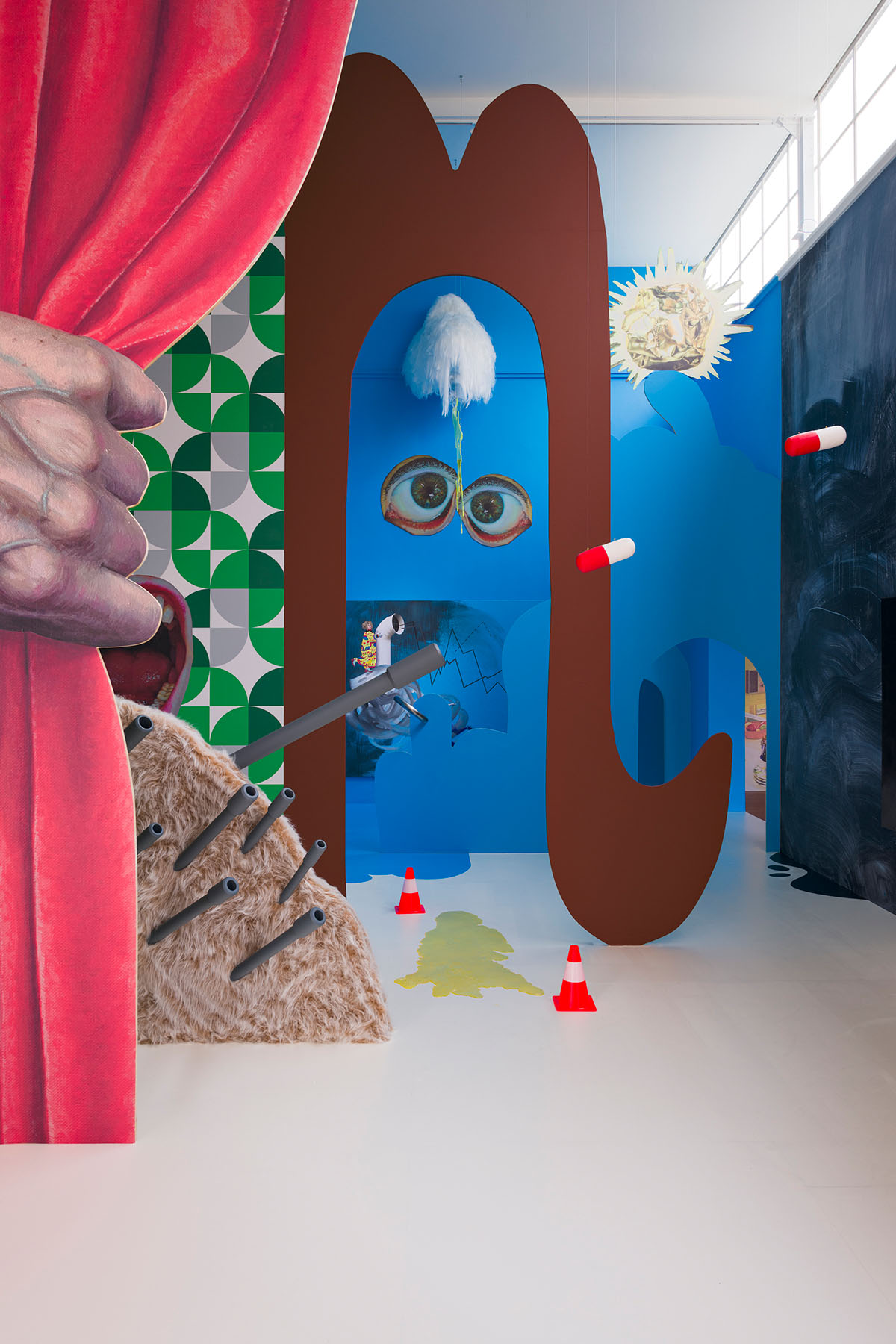
INSTALLATION VIEW, AUSTRIAN PAVILION, BIENNALE ARTE 2022 Photo: Georg Petermichl © Jakob Lena Knebl and Ashley Hans Scheirl 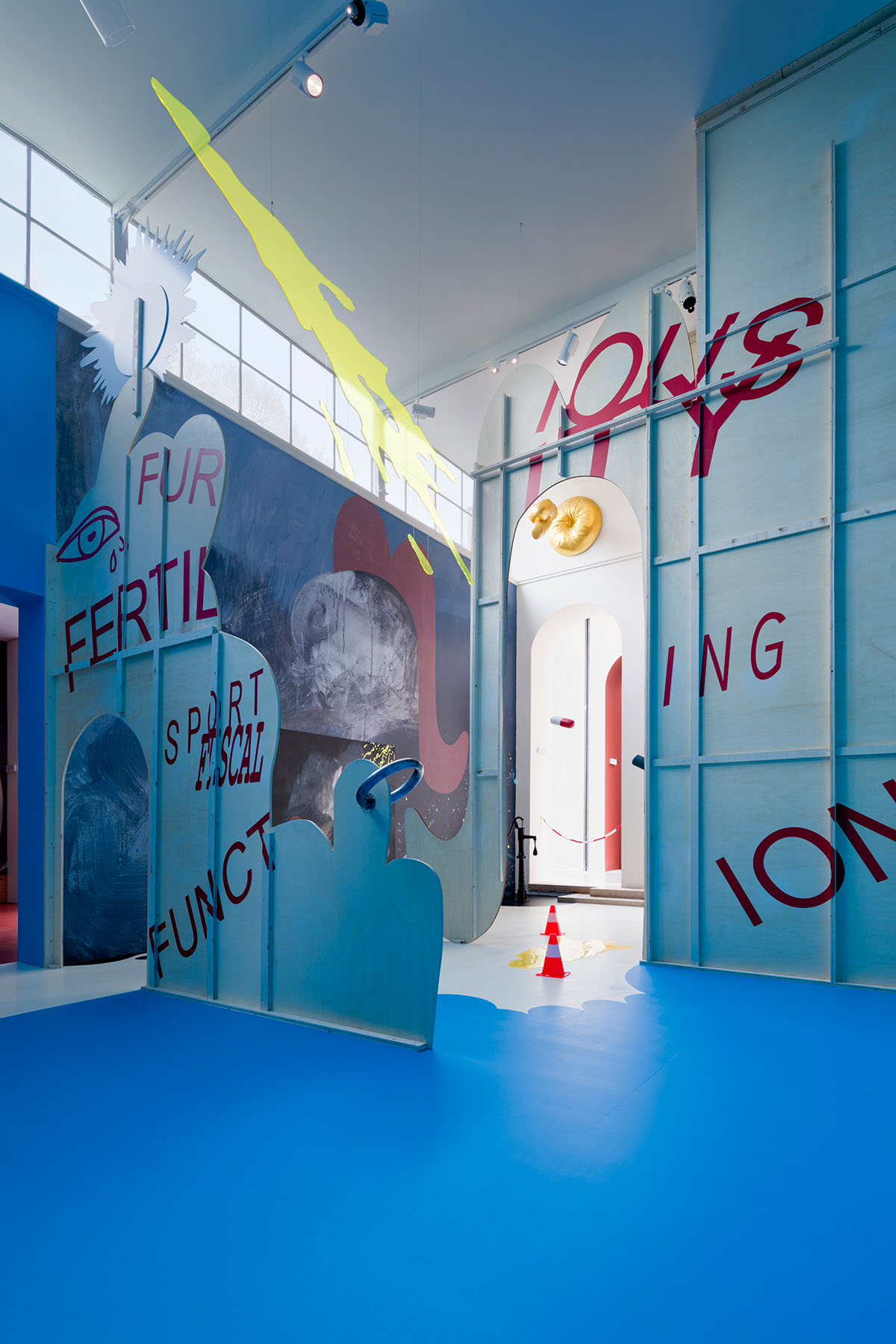
INSTALLATION VIEW, AUSTRIAN PAVILION, BIENNALE ARTE 2022 Photo: Georg Petermichl © Jakob Lena Knebl and Ashley Hans Scheirl 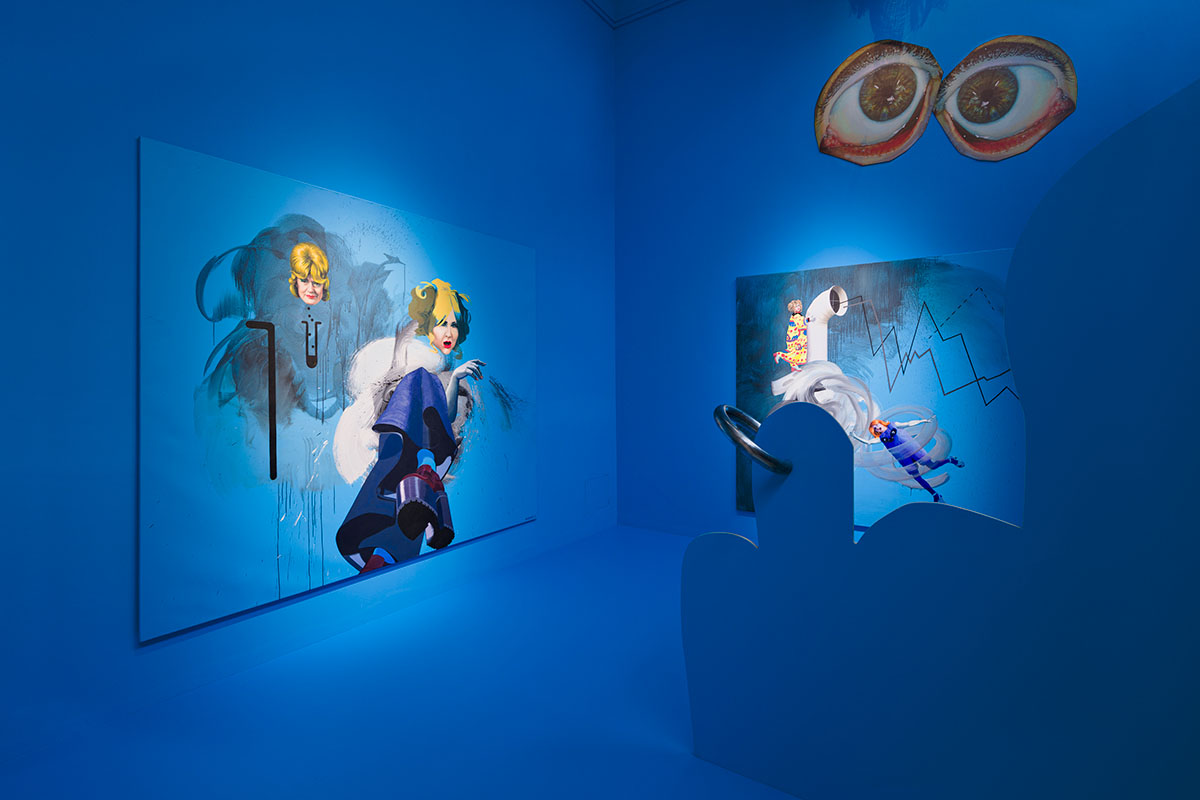
INSTALLATION VIEW, AUSTRIAN PAVILION, BIENNALE ARTE 2022 Photo: Georg Petermichl © Jakob Lena Knebl and Ashley Hans Scheirl
Ashley Hans Scheirl’s installation is a walk-in self-portrait as a painter. A red velvet curtain is pushed aside by the artist’s painted hand. As in a theatre proscenium, we see a staggered arrangement of flat pieces of scenery that at the same time make up the layers of this fold-out painting. As we enter, two different-sized eyes regard us from the rearmost wall with an ambivalent emotional expression. Above is a white, long-haired pubic mound, from which an oversize tube runs into the room. It ejaculates a clear yellowish ‘liquid’ into the room, leaving a puddle beneath the curve of a long hairstyle. From atop a shaggy hill, medicine-spewing tank guns are trained covetously on a shiny chunk of gold. An angrily gaping mouth adorns a living-room wallpaper from the 1970s. Behind it, a piercing ring is thrust through a cloud-shaped sky. Turning around, high above the entrance, the visitor sees a cushioned anus excreting a golden worm of paint into the room.
The two artists’ joint installation is characterised by a dynamic juxtaposition and intertwining of different, seemingly paradoxical spaces, styles and pictogramme-like symbols that all seek to garner the visitors’ attention with their own particular devices. The visitors, in turn, become protagonists in this piece, setting the scenery in motion with their bodies.
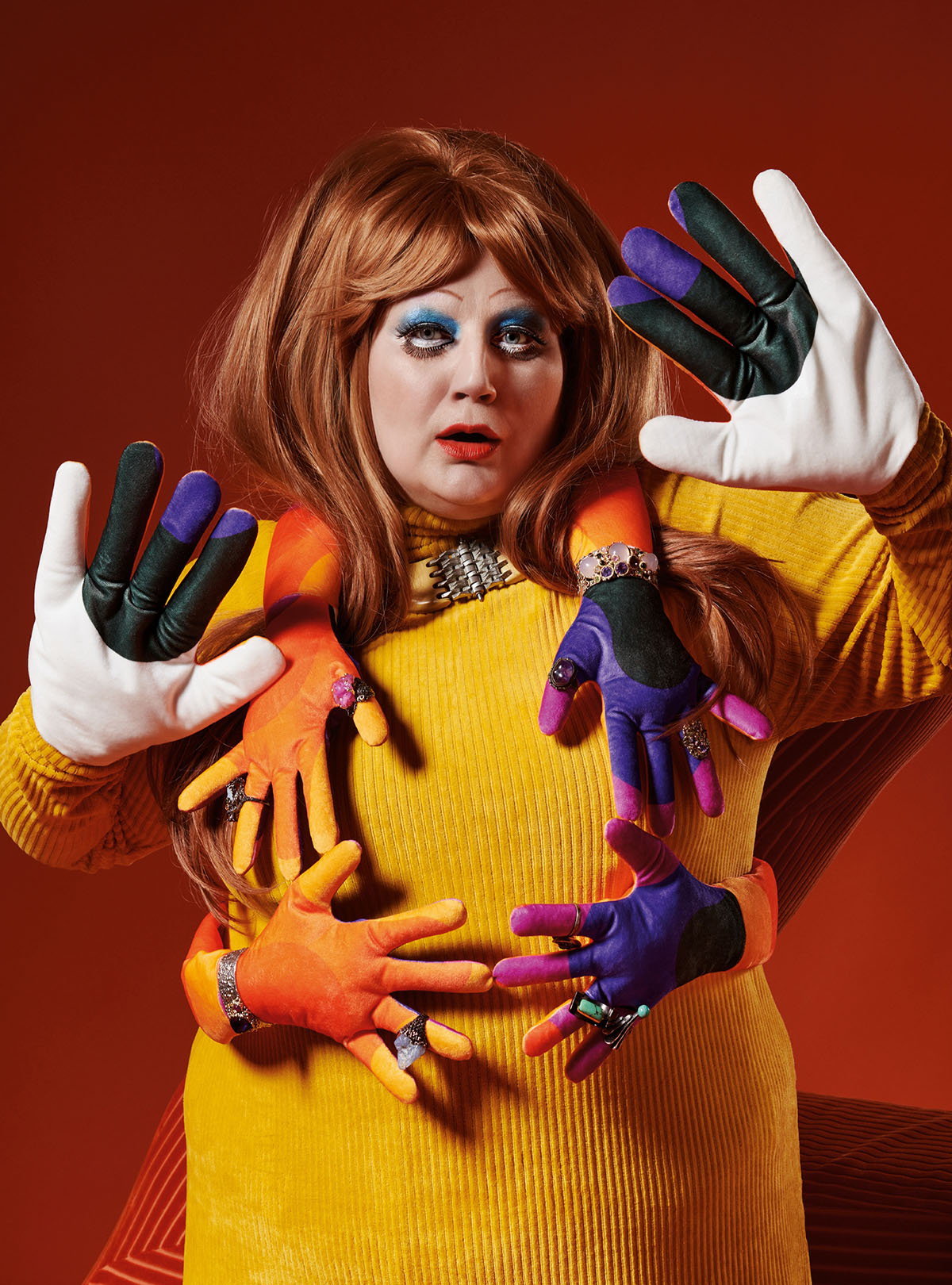
Jakob Lena Knebl, born in Baden near Vienna in 1970, worked in elderly care for ten years before studying Fashion under Raf Simons at the University of Applied Arts Vienna and Textual Sculpture under Heimo Zobernig at the Academy of Fine Arts Vienna. She was a senior artist at the Academy of Fine Arts Vienna and has been a professor of transmedia art at the University of Applied Arts, Vienna, since 2021. In 2017, she conceived a rearrangement of the collection of modern and contemporary art at mumok, which she—always daring to be eccentric—presented in conjunction with new works of her own on two levels of the museum. That same year, Jakob Lena Knebl was awarded the Austrian Federal Chancellery’s Outstanding Artist Award in the category Fine Art. In 2019, ArtNet News listed her as one of the “Most Influential Curators of the Decade.” In 2020, she had solo exhibitions at Lentos in Linz and at Galerie Georg Kargl Fine Arts in Vienna. In her show Marcher sur l’eau at the Musée d’Art et d’Histoire in Geneva, Jakob Lena Knebl is currently working on creating a dialog between exhibits from the museum collection and her own installations. The jumping-off point of her spatial strategies is often a photographic staging that puts the body as well as constructions of identity and desire in relation with sculptural objects and spaces both material and social. With this approach, she creates three-dimensional—at times walk-in—installations, settings, and dramatizations that are characterized by different aesthetics, media, materials, and intense atmospheres. She takes her references from the histories of art and design as well as the movements that have connected the two fields.
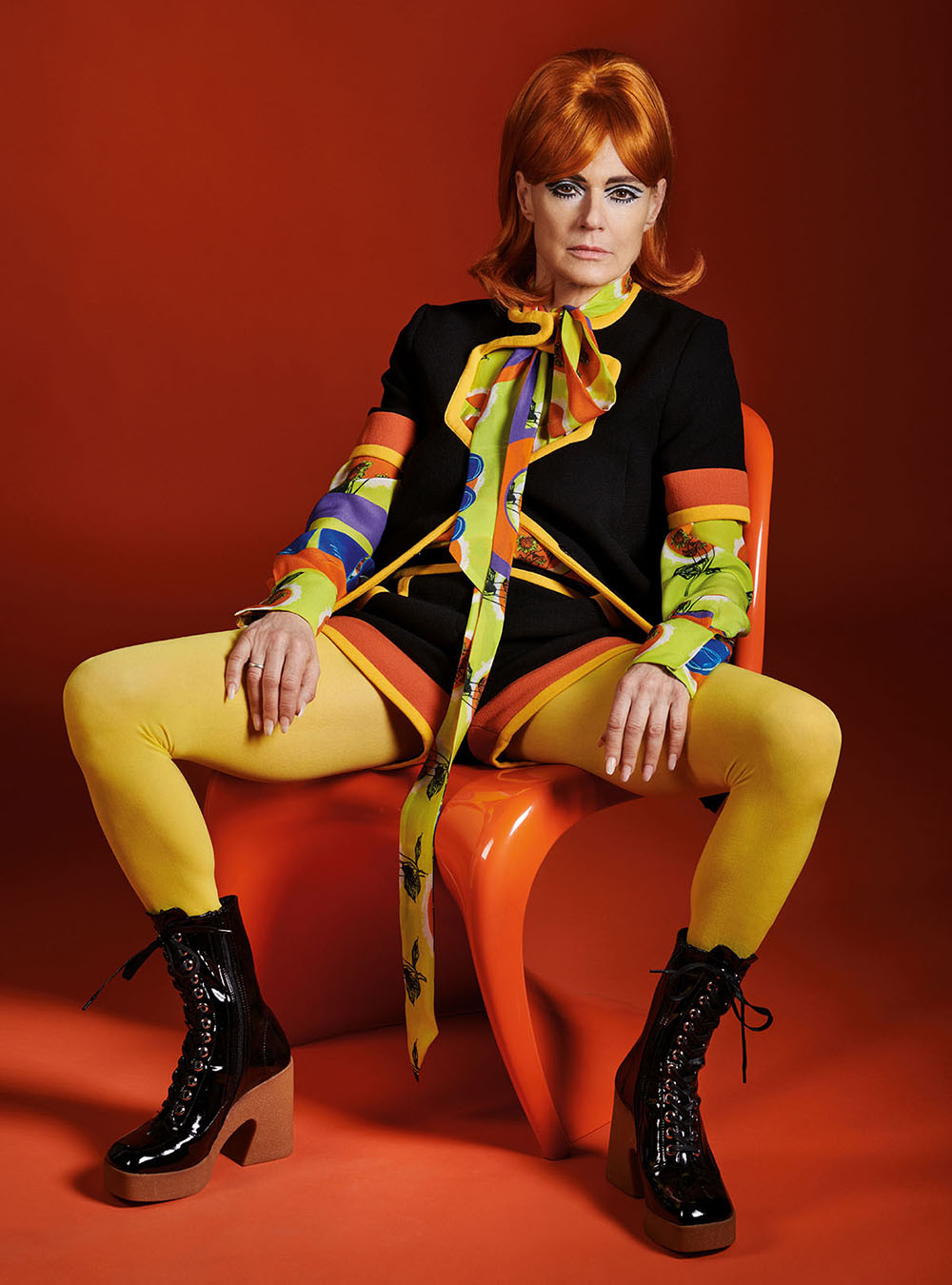
Ashley Hans Scheirl, born in Salzburg in 1956, studied at the Academy of Fine Arts Vienna from 1975 to 1980 and received her_his Master of Arts degree in Fine Arts from the Central Saint Martins College in London in 2003. Over the past years, she_he has presented large solo shows—most recently with Knebl at Kunsthaus Bregenz, before that at Kunstverein Salzburg and Künstlerhaus Graz in 2018—and participated in several international group exhibitions such as 2017’s documenta 14 in Athens and Kassel. Scheirl’s artistic practice began in the late 1970s, for which she has employed a multitude of different media. She_he went on to dedicate the next twenty years to the moving image. With more than fifty films and the transgender cult classic Dandy Dust, Scheirl has been one of the pioneers of the queer movement in the arts. Since the mid-1990s, painting has taken center stage in her_his practice, a type of painting that viewers experience as installations—which is to say in its incorporation of architecture, contexts, objects, video loops, and, not least, by the way the visitors move through them. From 2006 to 2021 Scheirl held a professorship for Contextual Painting at the Academy of Fine Arts Vienna. In 2006, she_he received the Austrian State Grant for Fine Art, in 2012 the City of Vienna Prize for Fine Arts, and in 2019, Ashley Hans Scheirl was awarded the Austrian Art Prize in the category Fine Arts by the Federal Chancellery.
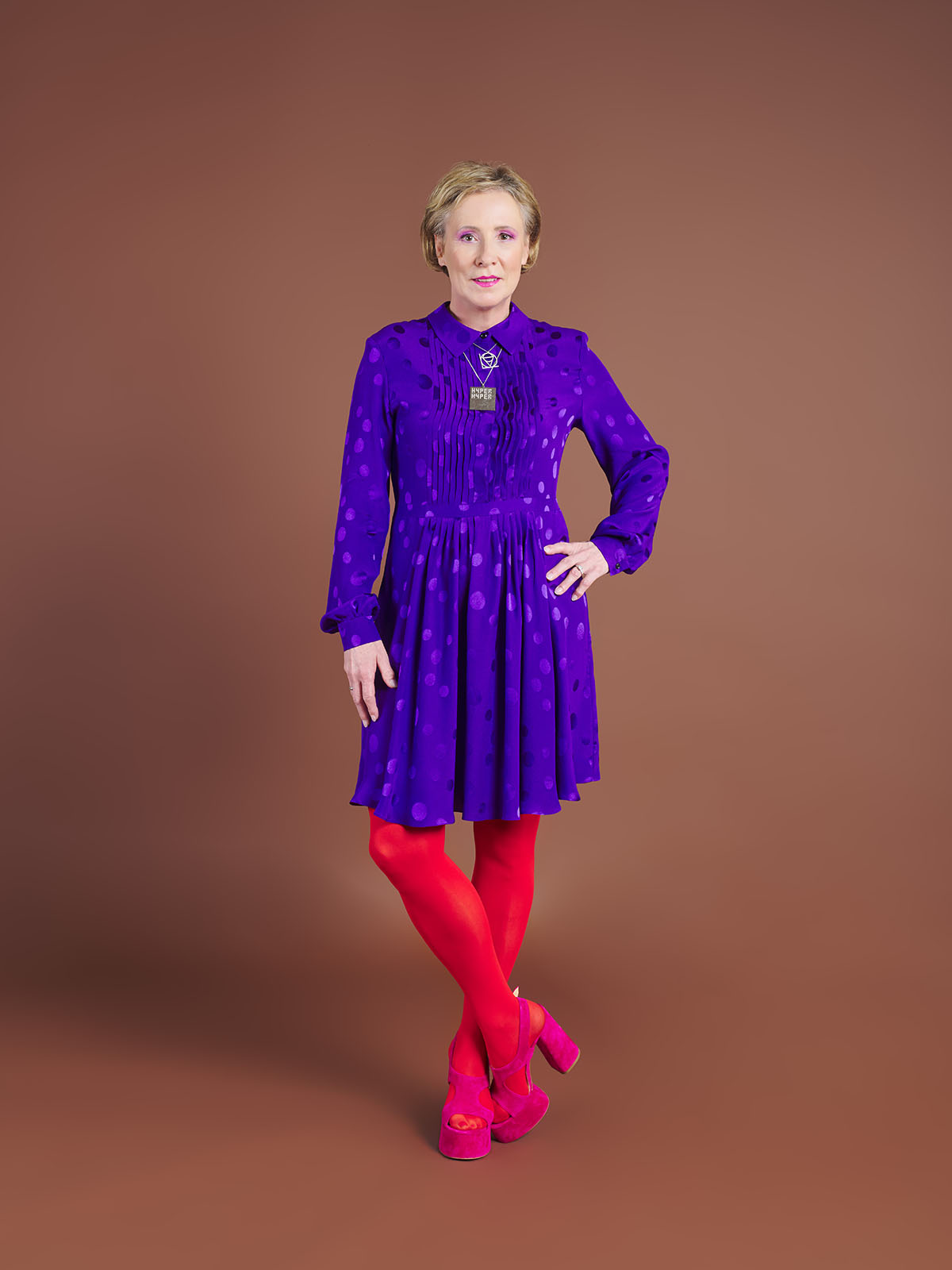
Curator of the Austrian Pavilion. Karola Kraus studied Art History, New German Literature, and Classical Archaeology. After completing her studies, she became the director of the non-commercial exhibition space Kunstraum Daxer and worked on several international exhibition projects, including managing the contribution to the German Pavilion of the 47th International Art Exhibition La Biennale di Venezia for Katharina Sieverding, in 1997. From 1999 to 2006, she was the director of Kunstverein Braunschweig and, afterward, the director of Staatliche Kunsthalle Baden-Baden. Karola Kraus taught at the University of Freiburg and the Academy of Fine Arts Karlsruhe, and participated in numerous state and private jury panels. In October 2010, she became Director of mumok – Museum moderner Kunst Stiftung Ludwig Wien. She is Vice President of the Roswitha Haftmann Stiftung, which honors excellence in fine arts and awards Europe’s highest-paying art prize.
Exhibition duration: April 23–November 27, 2022 Closed on Mondays except April 25, May 30, June 27, July 25, August 15, September 5, September 19, October 31 and November 21.
Opening hours Giardini and Arsenale: April 23–September 25, 2022 11 a.m.–7 p.m. (Arsenale open until 8 p.m. on Fridays and Saturdays) September 27–November 27, 2022 10 a.m.–6 p.m.
Program in Vienna: Soft Machine. An exhibition in cooperation with Phileas
May 6th – September 18th 2022; Opening hours: Tuesday-Friday 11am-6pm and Saturday 11am-3pm. Address: Opernring 17, 1010 Vienna
The extensive supporting program accompanying the Austrian participation at the Biennale Arte establishes a link between Venice and Austria and is also taking place in Vienna. For the first time, Jakob Lena Knebl and Ashley Hans Scheirl are accompanying the Austrian Pavilion in Venice with a sideshow that is being staged at the same time in Vienna. The venue in Vienna is the new exhibition space of Phileas. The exhibition showcases the work of Jakob Lena Knebl and Ashley Hans Scheirl alongside that of their students at the University of Applied Arts (Transmedia Art class) and the Academy of Fine Arts (Contextual Painting class). The exhibition of the students’ works, selected and installed by Knebl and Scheirl, will be rotated several times during the exhibition’s run, in keeping with the collaborative strategy pursued by the artists for their project in Venice.
Address and contact:
Austrian Pavilion
Biennale Arte 2022
59th International Art Exhibition
La Biennale di Venezia
www.biennalekneblscheirl.at
Press: Kathrin Luz, Kathrin Luz Communication, kl@luz-communication.de




